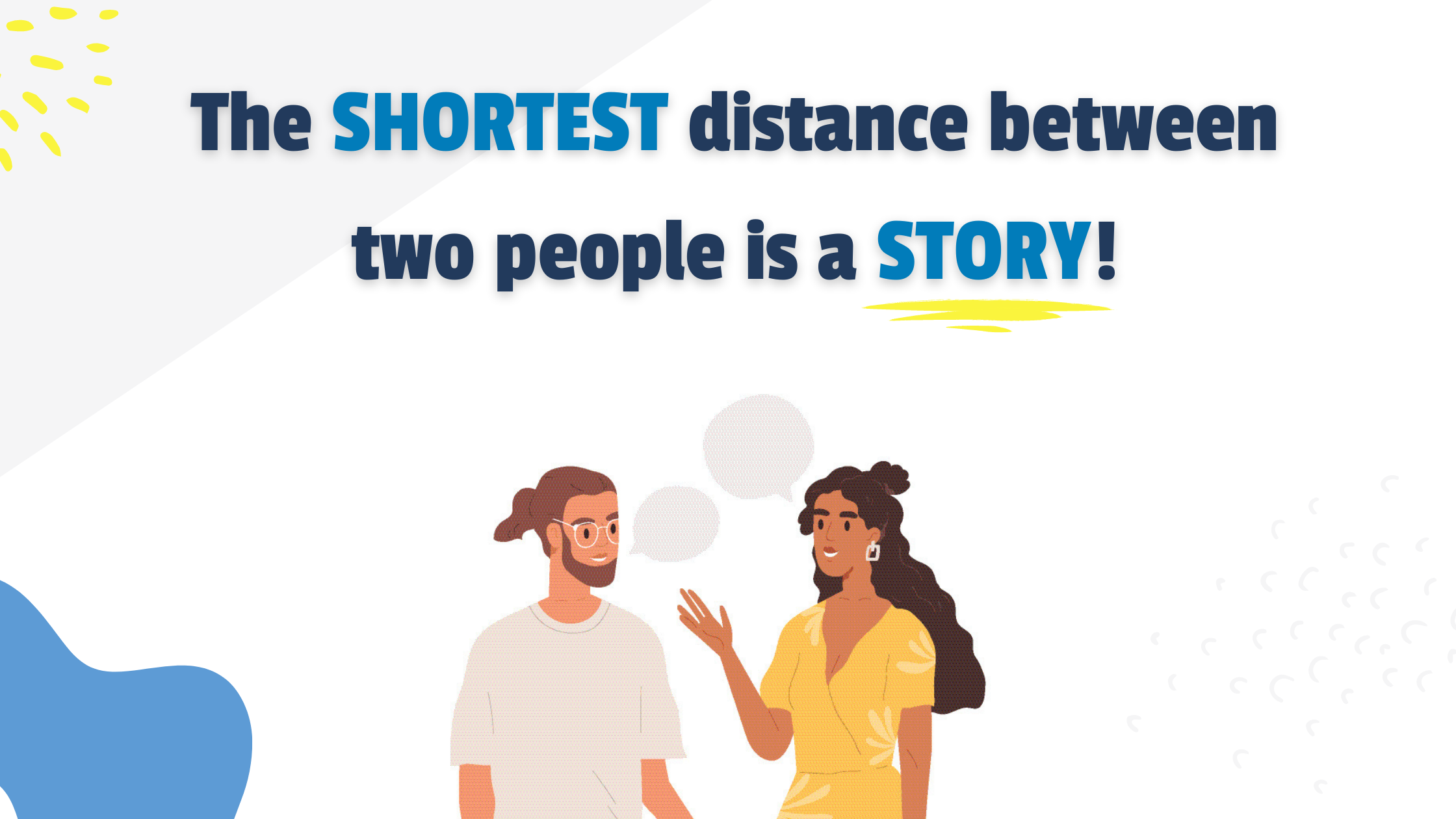Choosing The Right Story for the Right Moment
Choosing the Right Story for the Right Moment Choosing the right story to share at the right moment is important to significantly impact your...

At 2Win, we often say, "The only thing worse than never telling a story... is telling a bad one." Stories in a business environment should always be closely connected to your core message. We like to refer to this as the "Big Idea." By aligning your story to the Big Idea, you help your audience remember your key messages long after your conversation has ended. Connecting emotionally with your audience's motivations is what empowers you to drive the next steps in your initiative. This blog aims to guide you in your journey to becoming a great storyteller. Here are some of the topics we will be discussing:
In this section, we will explore three fundamental storytelling foundations that serve as guiding principles for creating stories that resonate deeply with your audience. Similar to how a musician learns and practices scales, these foundations help you to develop your storytelling skills, enabling you to communicate your message in a way that is both memorable and impactful.
While logic and reasoning undoubtedly play a role in decision-making, ultimately, people act based on emotions. Therefore, every buying decision is an emotional decision.
"People make decisions emotionally and then justify them logically."
-Chad Wilson, VP of Operations
It is important to recognize that emotions play a critical role in decision-making. When creating strategies, it's not enough to solely focus on the benefits or features of our solutions; we must also strive to connect with our audience on an emotional level.
The limbic system is the part of your brain that controls attention and is extremely powerful. The sensory processing system in your brain is constantly getting bombarded with information. As a result, your limbic system regularly prioritizes what you pay attention to. We want to be able to focus our audience's attention and avoid limbic overload. As you go through this blog, you'll learn:
The neocortex is the part of the brain that processes and stores information. It is responsible for memory and retention. People primarily remember things using one of two methods:
Now, repetition can get a little... repetitive. You don't want to constantly repeat yourself during a presentation or conversation. That would just be awkward and unnatural. That's why we want to use the power of association when delivering key messages we want our audience to remember.
Associations can either be positive or negative and we need to be deliberate in how we use them. Telling stories that are too close to home can have a negative impact because your audience has such strong associations that it's hard for them to see things from your viewpoint. You want to tell a story that isn't obviously connected to their current reality. Of course, you want to connect to the Big Idea, but taking them on a mental departure first will help them see things in a new way.
In Storytelling2Win, we discuss how some stories can be told in as little as 15 seconds. In this section, we want to focus on developing longer stories. It's important to note that even though these stories are longer, they still need to be told in under three minutes and should connect to the Big Idea in 90 seconds or less. One of the biggest mistakes people make when telling stories is that they need to figure out how to connect their narrative to the Big Idea, which often causes them to be longer than necessary. Here is your step-by-step guide to connect your story to the organizational objective:
"Improve customer experience and reduce cost through better visibility and clarity."
Notice that this is broken into two parts:
When crafting an impactful story, start by asking yourself, "What is the Big Idea?" With practice, this approach will become automatic.
Using a checklist can be an effective way to ensure that your story resonates with your audience. Before finalizing your story, it's important to ensure that it is captivating and relevant and conveys your message effectively. This can help foster a strong emotional connection with your audience. Here are three key elements that your story should incorporate:
It's perfectly normal for your story to go through multiple iterations before you get it just right. To start, simply outline the main points of your idea without worrying about making it perfect. With practice, your story will become more refined and polished.
Have you ever heard a story that moves from topic to topic with no clear purpose? We call this crime the Rambler. It tends to happen when the storyteller doesn't understand the key elements of a great story. To get a better understanding of how to tell a great story, let's take a look at the four most common business stories.
Illustrative analogies can be challenging to master, but they are the most compelling story type for making your message memorable. When done right, analogies can make your message resonate deeply, ensuring it's not just heard but remembered and acted upon. Here's why they work so well:
There is a pretty good chance that you have delivered a case study before. It is one of the most common story types told. The goal of a case study is to provide a thorough and compelling evidence-based narrative to support your message or solution. Unfortunately, we see time and time again people making these two big mistakes when telling a case study:
By addressing these challenges and employing strategic communication techniques, you can turn your case studies into powerful, engaging, and effective tools for connecting with your audience.
One approach that you can take is to share a story that you gathered during your previous conversation with them. Keep in mind it's important to reframe the information in a way that goes beyond just repeating the facts. Instead, you should present it back as a tailored insight that sheds new light on its significance. This does two things:
Sharing a Discovery insight is a powerful tool for engaging and influencing your audience. It demonstrates that you're more than a provider; you're a partner in their success.
Starting a conversation with a customer or prospect can be challenging, especially if you don't know much about them. One way to approach this is by sharing an industry insight. This can help you provide your perspective without compromising your credibility, because you are sharing what you see. There are two types of insights you can choose from:
Effective storytelling is not just about sharing information, it's about leaving a lasting impression that motivates action. To achieve this, the key is to emotionally engage with your audience, communicate your message with clarity, and make it relevant to them. If you can do this successfully, you can use storytelling as a powerful tool to convey your ideas and drive your initiatives forward. Whether you're pitching a new concept, sharing insights from a discovery, or illustrating complex concepts with analogies, the goal is to connect with your audience and inspire them toward your desired outcome.
We encourage you to practice and integrate these principles into your storytelling efforts. As you become more skilled at crafting and delivering stories that resonate, your messages will become more memorable and more effective in driving next steps.

Choosing the Right Story for the Right Moment Choosing the right story to share at the right moment is important to significantly impact your...

It is hard to argue the value and impact of storytelling in business. Great stories capture people's attention, imaginations, and emotions....
There's a moment in every software demo when you can feel the audience slip away. Maybe it's the glazed look when you dive into feature number 47, or...